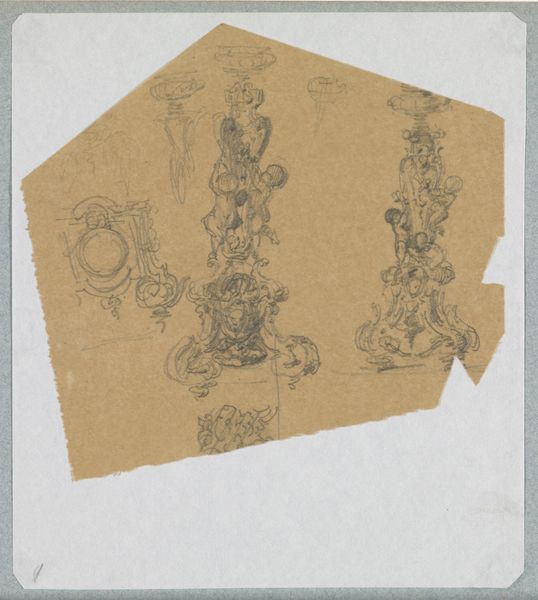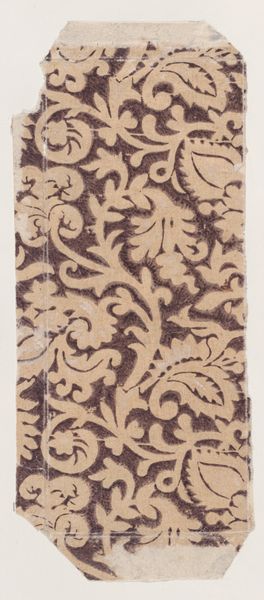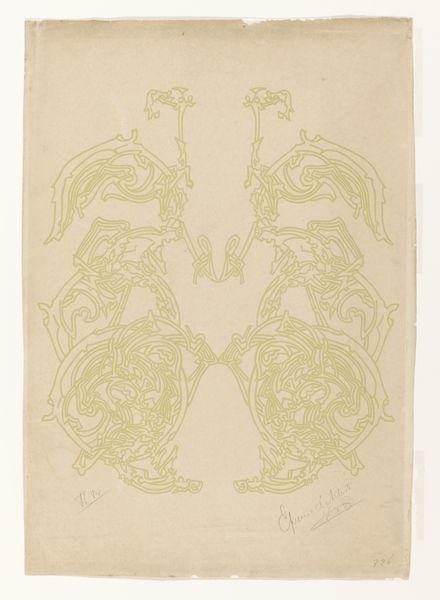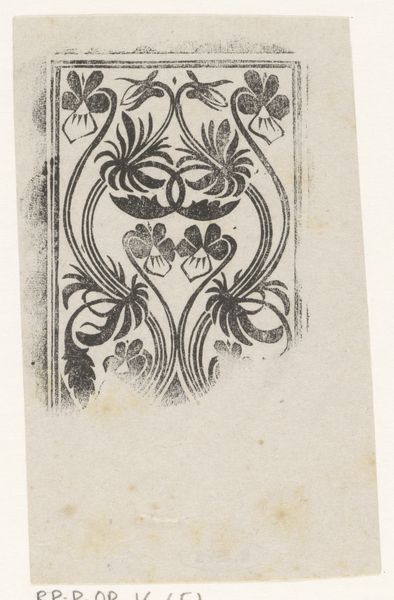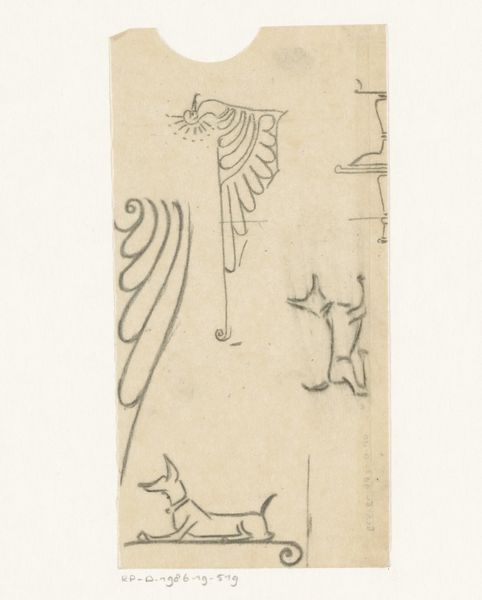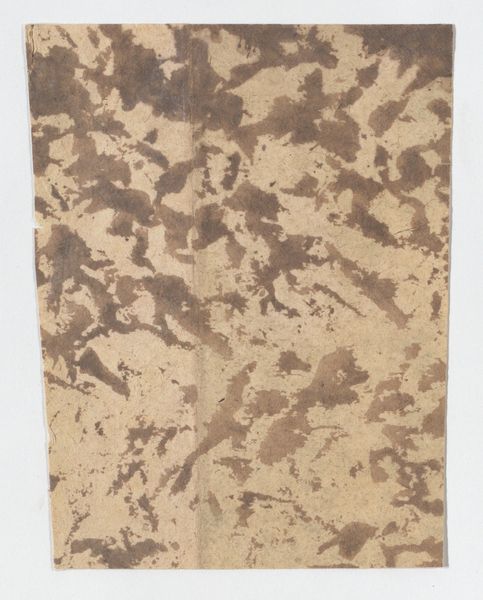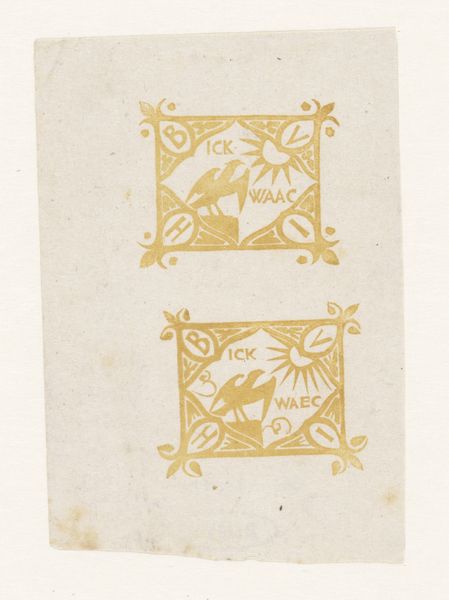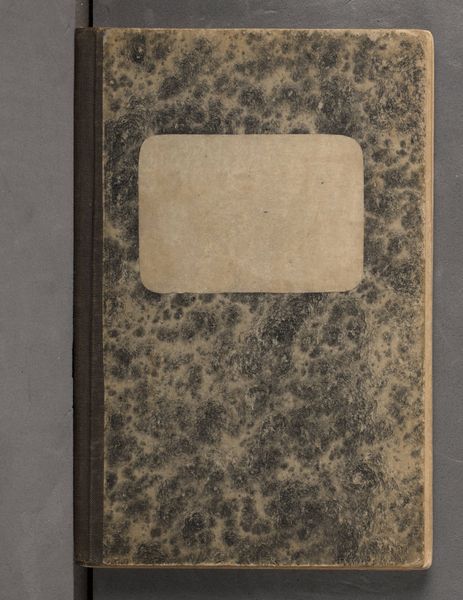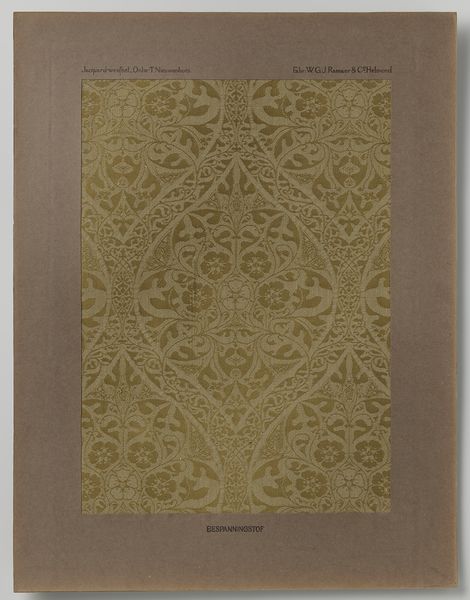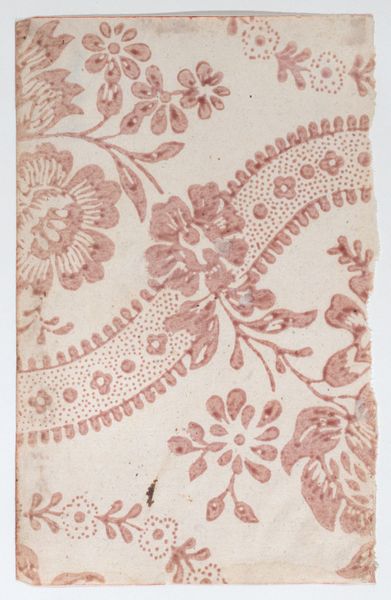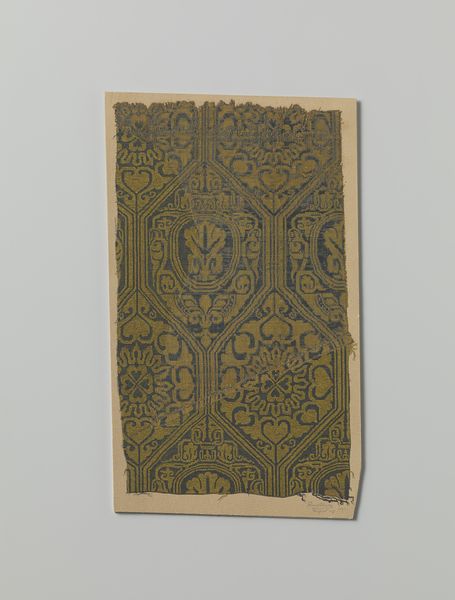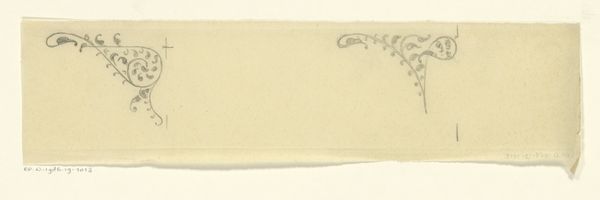
drawing, paper, pencil
#
pencil drawn
#
drawing
#
pencil sketch
#
paper
#
form
#
geometric
#
pencil
#
line
#
academic-art
#
decorative-art
Dimensions: height 142 mm, width 82 mm
Copyright: Rijks Museum: Open Domain
Curator: This is "Ontwerp voor een ornamenteel kader," or "Design for an Ornamental Frame," attributed to Reinier Willem Petrus de Vries, created sometime between 1884 and 1952. It’s a pencil drawing on paper. Editor: My first thought is how delicate it appears, almost like looking at a forgotten fragment. The brown paper gives it an aged feeling, contrasting the lively swirls of the pencil work. Curator: Indeed. This piece gives us a glimpse into the design process of decorative arts. Vries likely intended this as a study for a larger work, possibly architectural or furniture related. Ornamentation during this period often drew upon historical styles, incorporating them into contemporary designs. Editor: Looking at the organic shapes intertwined with more geometric forms, I wonder if this frame design was intended for something that blurred the lines between art and utility, reflecting a larger movement to integrate aesthetics into everyday life? I'm also interested in what messages frames transmit through ornamental meaning. What kind of narratives are historically imposed by design like this and what purpose does it serve? Curator: It's an excellent question. Consider how institutions use similar frames to enhance their self-representation by influencing how people engage with art through a specific design language that expresses its social status. And speaking of form, one must remember the role of Art Nouveau and the broader aesthetic context, especially when understanding the role of beauty within complex political climates. Editor: Absolutely. By understanding what's being emphasized aesthetically, the narratives that such frames impose begin to reveal deeper issues that speak to gender, power, and privilege. For example, could we interpret this as challenging conventional understandings of identity or as promoting inclusive aesthetics? Curator: While those are pertinent and useful observations, such claims would likely depend on the artwork ultimately framed and displayed using this sketch. Editor: Yes, exactly. Ultimately, as scholars we are responsible for creating dialogue between historical design choices and critical discussions that challenge dominant art spaces and social norms. Curator: I agree. A close look reminds us of art’s broader cultural implications and the power embedded within designs like these. Editor: Precisely, and reflecting on this also enriches our understanding of both the artist and the larger art landscape.
Comments
No comments
Be the first to comment and join the conversation on the ultimate creative platform.
